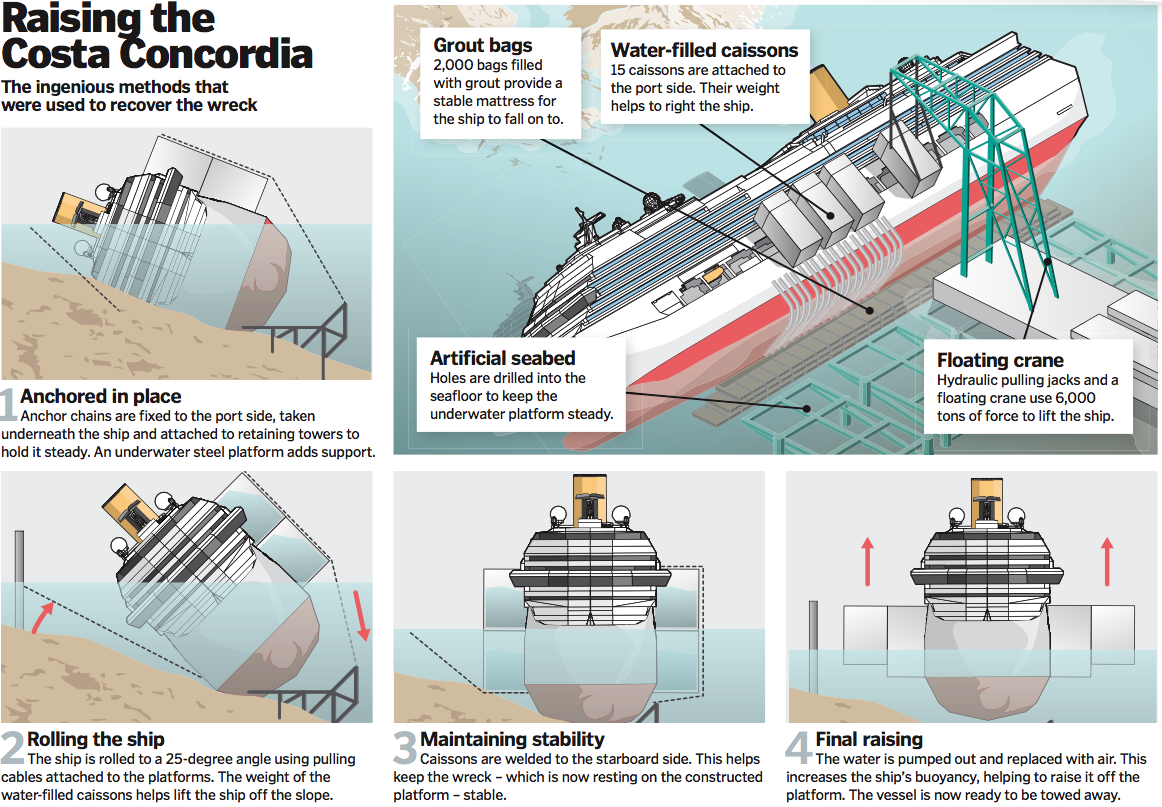Salvaging a shipwreck: Raising the Costa Concordia
In 2012 the Costa Concordia ran aground with over 4,000 passengers and crew on board. 32 people sadly lost their lives. For nearly two years it sat dormant in the Tyrrhenian Sea, a constant reminder of the tragedy for the population of the nearby island of Giglio off the coast of Tuscany, Italy.
The cruise ship had capsized after it had collided with rocks as its captain tried to perform a sail-by ‘salute’. Resting on a shallow seabed, most of the stricken ship was still visible above the water. The raising had to be meticulously planned.
There were concerns that if the operation went wrong the ship could tumble down and be submerged completely. To further complicate matters, the wreck was surrounded by a marine national park with a coral reef, which plays host to a range of wildlife, including several endangered and rare species. This meant the raising was undertaken as a closed operation to ensure no debris could escape and contaminate the ocean further.
When the salvation operation was complete, the ship was towed over 350 kilometres to a dry dock in Genoa, where the deck was stripped piece by piece and then completely dismantled and scrapped. Back at the wreck site, sea grasses were replanted as efforts were made to restore the seabed and reverse the damage done. A part of the rock that tore the Costa Concordia’s hull open is to be used as a memorial.
For more science and technology articles, pick up the latest copy of How It Works from all good retailers or from our website now. If you have a tablet or smartphone, you can also download the digital version onto your iOS or Android device. To make sure you never miss an issue of How It Works magazine, subscribe today!
Other articles you may like:






